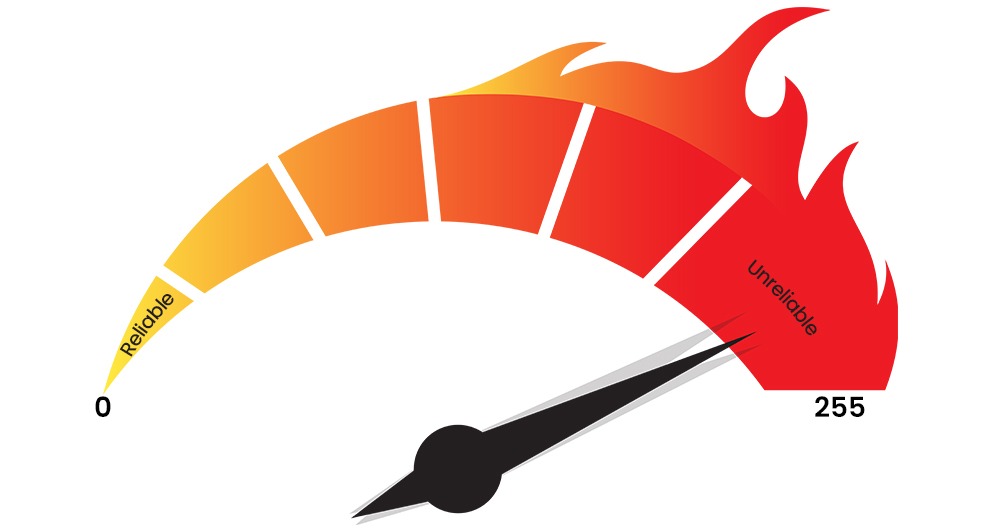Introduction
One of the most important concepts in routing is administrative distance (AD). AD is a metric that determines the reliability or trustworthiness of a routing source. With the help of AD value, routers can easily choose the best route among multiple routes to the same destination. In this blog, we will explain the concept of AD or Administrative Distance in networking. We will discuss the different purposes of AD, how it operates, and its advantages and disadvantages.
Before getting into more details, let’s first understand what AD value really is.
What is AD Value in Networking?
Administrative Distance or AD Value represents a value assigned by routers to each route source. It is a numerical value assigned to different routing protocols to rank their trustworthiness when multiple routes to the same destination exist. Routers use AD to determine which route should be preferred when conflicting routes are learned from different sources.
The lower the number, the higher the reliability or preference of that route source becomes. For instance, a route obtained from a connected interface possesses an AD value of 0 indicating it as the trusted option. On the other hand, a route learned through a static route carries an AD value of 1 signifying its considerable reliability but not as much as a directly connected route.
If we consider a routing protocol like OSPF routes acquired through it have an AD value of 110. This value signifies that they are less reliable than a static route but more dependable than other dynamic routing protocols available.
Below we have shown the Ad value and how the priority is chosen.

AD is also referred to as route preference or route ranking; however, it is only utilized within routers. It is not shared with other routers in the network. Different router vendors usually have their predefined default values for AD associated with types of route sources.
For example, if a router receives two routes for the same distance. One from OSPF (AD = 110) and another from EIGRP (AD = 90), the router chooses EIGRP as it has a lower AD value.
Characteristics of Administrative Distance:
- The lower the AD value, the more trusted the route.
- AD is assigned by default but can be adjusted manually.
- AD Value can help in selecting the best path in a multi-protocol environment.
Default AD Value of Routing Protocols
For instance, when it comes to Cisco routers the default values of routing protocols that are used are as follows:
| Routing Protocols | AD Value |
|---|---|
| Connected Route | 0 |
| Static Route | 1 |
| BGP (External) | 20 |
| EIGRP (Internal routes) | 90 |
| IGRP | 100 |
| OSPF | 110 |
| IS-IS | 115 |
| RIP | 120 |
| EIGRP (external routes) | 170 |
| BGP (Internal) | 200 |
| DHCP Default Route | 254 |
| Unreliable source | 255 |
Note: It is possible to modify the administrative distance value of a route using configuration commands. This can be helpful in situations where you want to influence the process of selecting routes based on your network design and preferences.
For better understanding, we have explained the purpose of AD value below.
Purpose of AD Value
The purpose of AD is to assist the router in selecting the optimal route, that is among multiple routes leading to the same destination. This situation can arise when the router is utilizing routing protocols or has sources providing routes for the same network. For better understanding, let’s consider a scenario where a router receives information about network 10.0.0.0/24 from three sources; a connected interface, a static route, and OSPF.
The router will compare the AD values associated with these sources. Once it is done with comparing the values, it chooses the one with the value. In this case, since the connected interface has an AD of 0 which is the lowest it becomes the chosen route while disregarding others.
AD also plays a role in preventing routing loops and ensuring routing operations. A routing loop occurs when packets are endlessly forwarded between routers without reaching their intended destination. This commonly happens due to inconsistent or incorrect routing information within the network. let’s consider two routers named R1 and R2 running OSPF and RIP for network 10.0.0.0/24 respectively. R1 receives information about this network from OSPF with an AD of 110.
After that, it advertises to R2 via RIP with an AD of 120. R2 learns about this network from RIP with an AD of 120. After that, it advertises back to R1 via OSPF with an AD value of 110. This results in a situation where R1 and R2 continuously exchange packets with each other for the network 10.0.0.0/24.
To avoid this, routers utilize administrative distance (AD) to filter out routes that are considered more reliable than their own.
How does Administrative Distance works?
Administrative Distance operates by comparing the values of sources for different routes leading to the destination network. The router follows these steps to determine the route;
- First, the router checks if there is a connected route for the destination network. If one exists it utilizes this route and afterwards terminates the process.
- If there is no connected route the router then examines whether there is a static route defined for the destination network. If so, it selects this route and after that, it stops the process.
- In cases where no static routes exist, the router proceeds to assess routes originating from routing protocols for the given destination network. If there are, the router will compare their AD values and select the route with the lowest value.
- In case there are routes with the same AD value the router will utilize its vendor-specific algorithm to resolve the tie and choose a single route.
How Does Administrative Distance Affect Routing Decisions?
When multiple routing protocols advertise the same destination network, the router follows these steps:
- Checks the AD Value – The router looks at the AD value of each route.
- Prefers the Lowest AD – The route with the lowest AD is selected as the best path.
- Stores in the Routing Table – The chosen route is installed in the routing table.
- Uses Backup Routes (if available) – If the preferred route fails, the next lowest AD route is used.
Example:
A router learns about 192.168.1.0/24 from two sources:
- EIGRP (AD = 90)
- OSPF (AD = 110)
Since EIGRP has a lower AD value (90 < 110), the router selects it as the preferred route. OSPF’s route will only be used if the EIGRP route fails.
Can you change the Administrative Distance?
Yes! It is possible to change the Administrative Distance. Network engineers can manually configure AD values to influence route selection. This is done when it is required to override default preferences due to specific network design requirements.
How to Change AD Value?
Modifying the AD of a Static Route:
Router(config)# ip route 10.0.0.0 255.255.255.0 192.168.1.1 5
Here, the last number 5 represents the new AD value, making this route less preferred than the default static route (AD = 1).
Changing the AD for OSPF Routes:
Router(config-router)# distance 150
This sets OSPF AD to 150, making it less preferable than other protocols with lower AD values.
Best Practices for Managing Administrative Distance
- Keep Default AD Values Unless Necessary: Changing AD values can lead to unintended routing issues if not planned properly.
- Use Route Filtering: Instead of changing AD, use route maps or prefix lists to control route selection.
- Plan for Failover: Ensure backup routes exist with appropriate AD values for redundancy.
- Monitor Route Changes: Regularly check routing tables to verify expected behavior after AD modifications.
Advantages of Administrative Distance
Some of the advantages of AD are:
- It grants network administrators the ability to prioritize one routing protocol or static route over another.
- It offers flexibility and scalability, in designing and implementing networks.
- It improves network performance and reliability by preventing routing loops and selecting routes.
- It facilitates interoperability and integration of routing protocols and technologies.
Disadvantages of AD
Some of the disadvantages of AD are:
- Network troubleshooting and maintenance can become complex and confusing when using AD.
- If not configured consistently across routers it may lead to routing decisions or conflicts.
- Improper security measures or manipulation by actors can introduce security risks.
Frequently Asked Questions
Q1. What is OSPF AD value?
OSPF has an AD value of 110 which gives it priority, over routing protocols like RIP or EIGRP.
Q2. What is the value of ad in protocol?
The value of the ad ranges from 0 to 255 and it is different for different protocols.
Q3. What is ad value in RIP protocol?
RIP protocol operates as a distance vector routing protocol using hop count as a metric for routing decisions. It functions at the network layer of the OSI model. Possesses an AD value of 120—making it less reliable than some alternative routing protocols.
Q4. What is the range of ad value?
The administrative distance values span from 0 to 255, on a scale where 0 signifies connectivity and 255 indicates a route.
Q5. What is BGP AD value?
The BGP AD value depends on whether it is External BGP (eBGP) or Internal BGP (iBGP):
- eBGP AD value = 20 (more preferred)
- iBGP AD value = 200 (less preferred)
Since lower AD values are more trusted, routers prioritize eBGP routes over iBGP when both advertise the same destination.
Conclusion
Administrative Distance (AD Value) is a fundamental concept in networking that influences how routers select the best route among multiple options. Understanding default AD values and how to modify them allows network engineers to design more reliable and efficient networks.
By effectively managing AD values, businesses can ensure better route prioritization, improved redundancy, and optimized network performance. If you want to learn more about such topics, you can explore our networking courses to enhance your skills in CCNA, CCNP, and advanced networking technologies.





